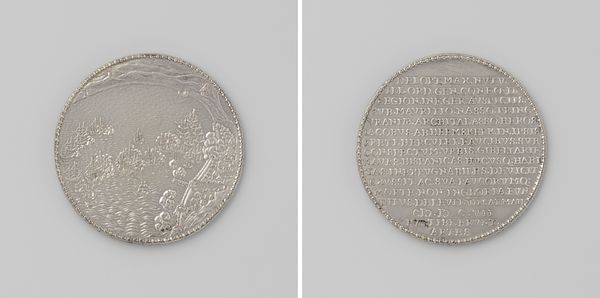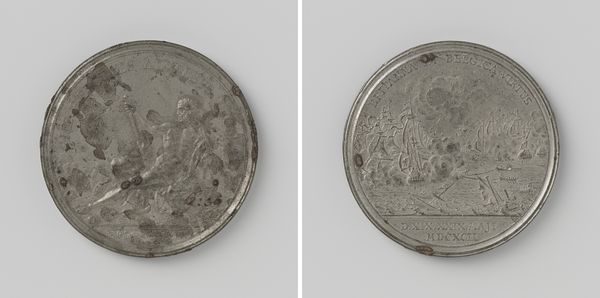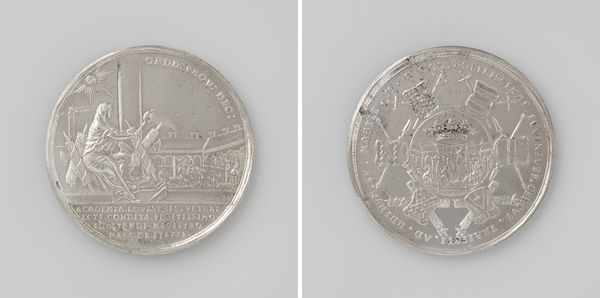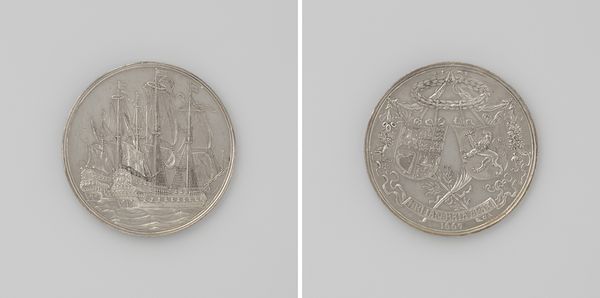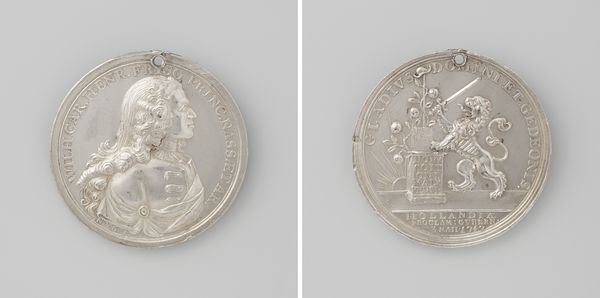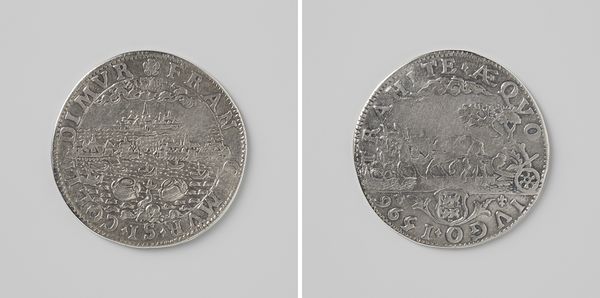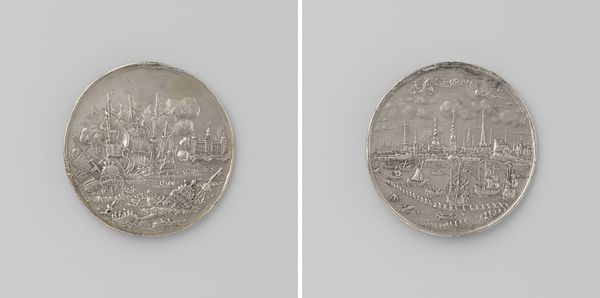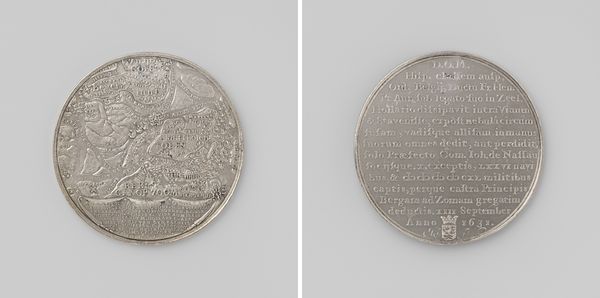
Grote vergadering der Staten-Generaal na de dood van Willem II in Den Haag gehouden 1651
0:00
0:00
silver, print, metal, engraving
#
portrait
#
silver
#
baroque
# print
#
metal
#
ceramic
#
engraving
#
decorative art
Dimensions: diameter 6.9 cm, weight 85.30 gr
Copyright: Rijks Museum: Open Domain
Curator: Look at this striking medal, "Grote vergadering der Staten-Generaal na de dood van Willem II in Den Haag gehouden," created by Sebastian Dadler in 1651. Editor: It's intricate! All those tiny figures... the silver reflects the light beautifully, giving it an ethereal quality. There's a real sense of drama. Curator: Dadler used silver and engraving techniques. Think about the socio-political statement of this commemorative medal: it documents the meeting of the States-General after the death of Willem II. This marked a pivotal moment in Dutch history, the shift towards a more republican governance. Editor: So the composition underscores that power shift? Note how all lines converge upwards—the rays, the ascending tiers of figures leading the eye directly towards that central figure standing atop the assembly. A fascinating dynamic between the material, silver, and the implied ascending trajectory. Curator: Absolutely. And the material itself! Silver wasn't cheap; medals like this were diplomatic gifts and records for posterity, commissioned by and for the wealthy merchant classes to project their newly assumed political legitimacy. Editor: It's an exercise in visual rhetoric! That allegorical figure radiates authority, emphasized by the divine light piercing through those stormy-looking clouds. What kind of narrative does Dadler wish to inscribe? Curator: Consider this not as simply a depiction but a carefully crafted material object, intended for exchange within political circles, serving as currency in ongoing dialogues of power and legitimacy, it shaped perspectives as much as recording them. The production and circulation of pieces like this played a huge part. Editor: I'm left with a lingering question. How would this circulate beyond the immediate elites? Was it merely symbolic for public viewing? An intriguing artwork from a pivotal moment! Curator: The engraving’s replication meant greater dispersal amongst a politically-interested elite and wider public discourse, although not "democratic". Still it had broader cultural influence than mere immediate diplomatic exchange, I'd say. Editor: I leave feeling intrigued and reflecting on this little token of enormous social change.
Comments
No comments
Be the first to comment and join the conversation on the ultimate creative platform.

